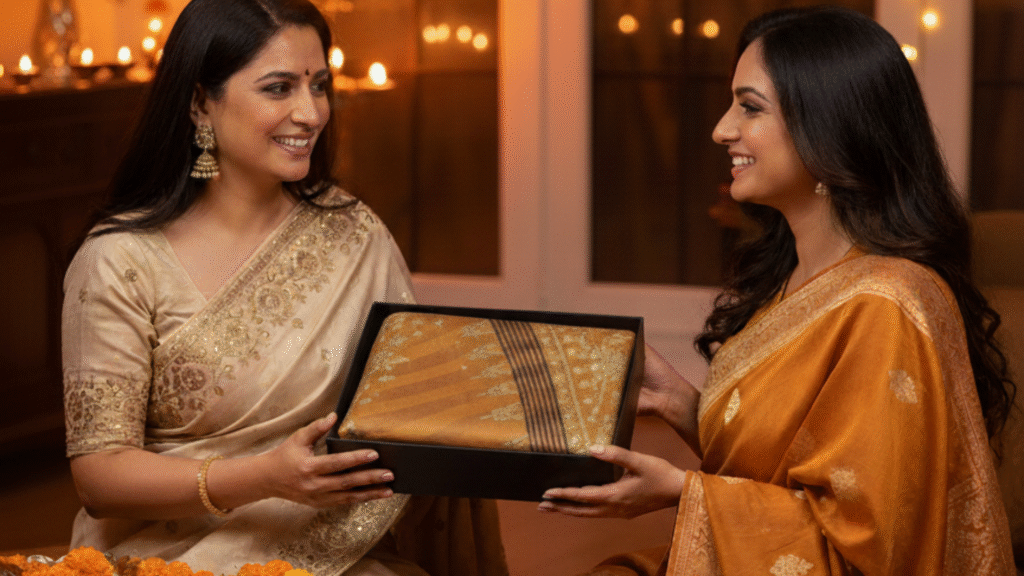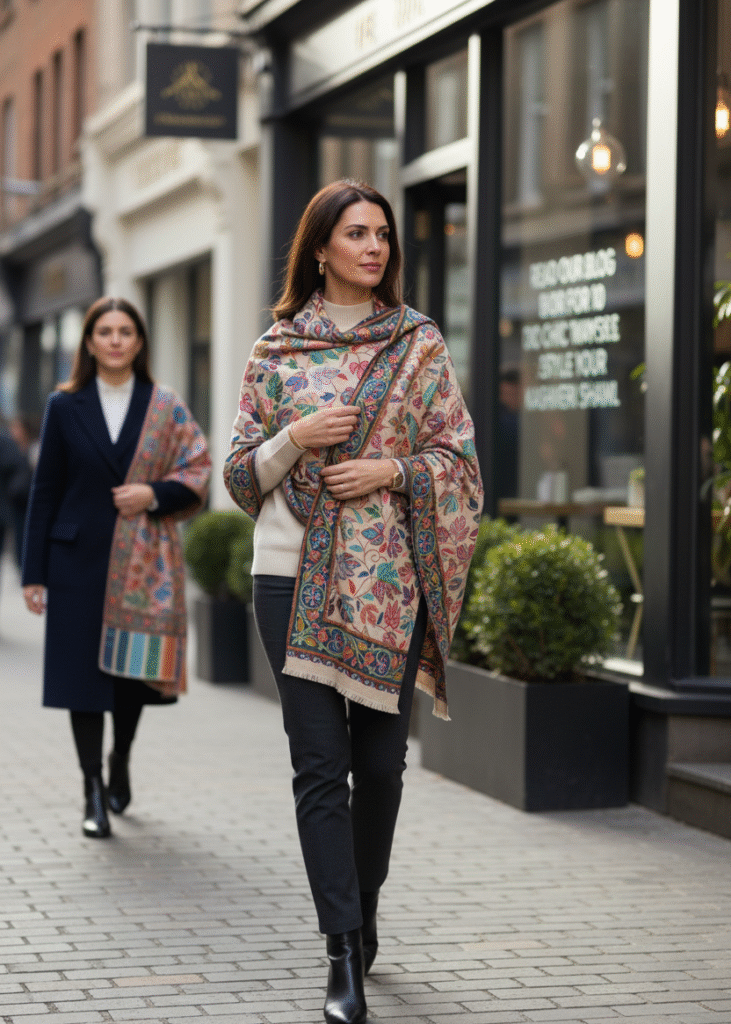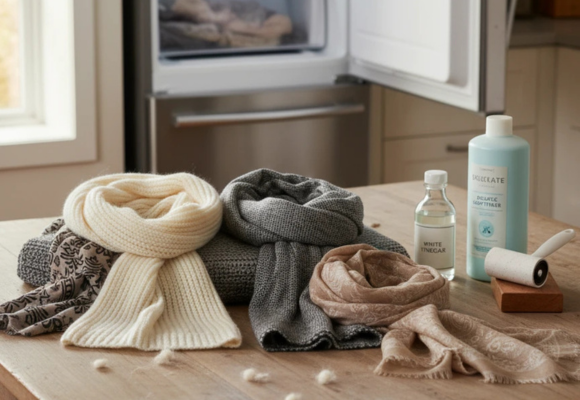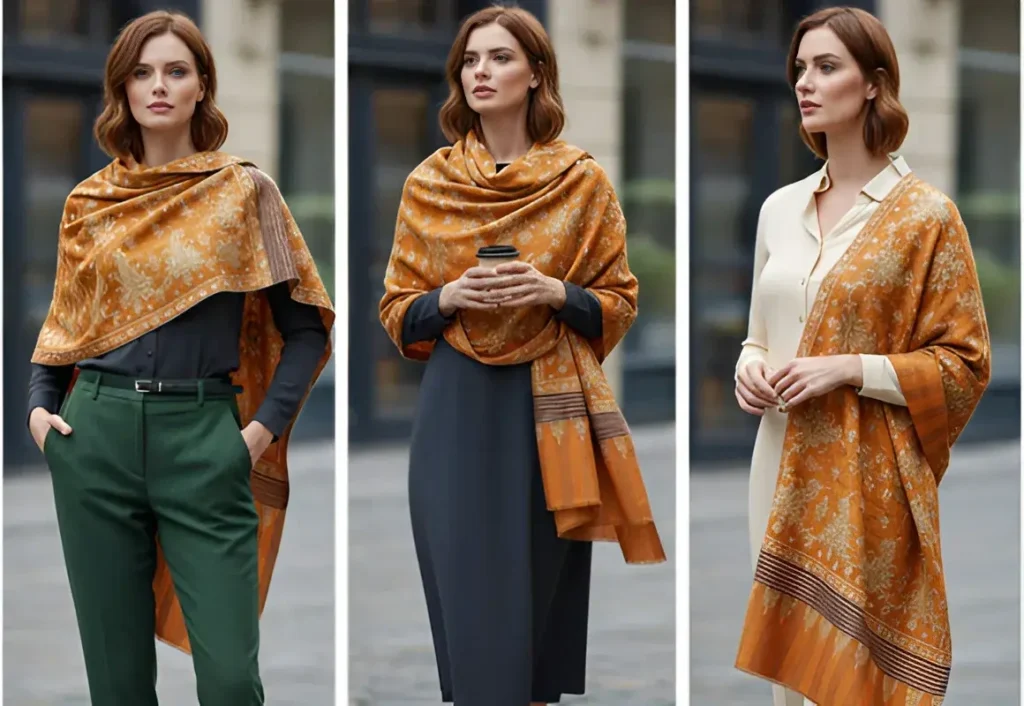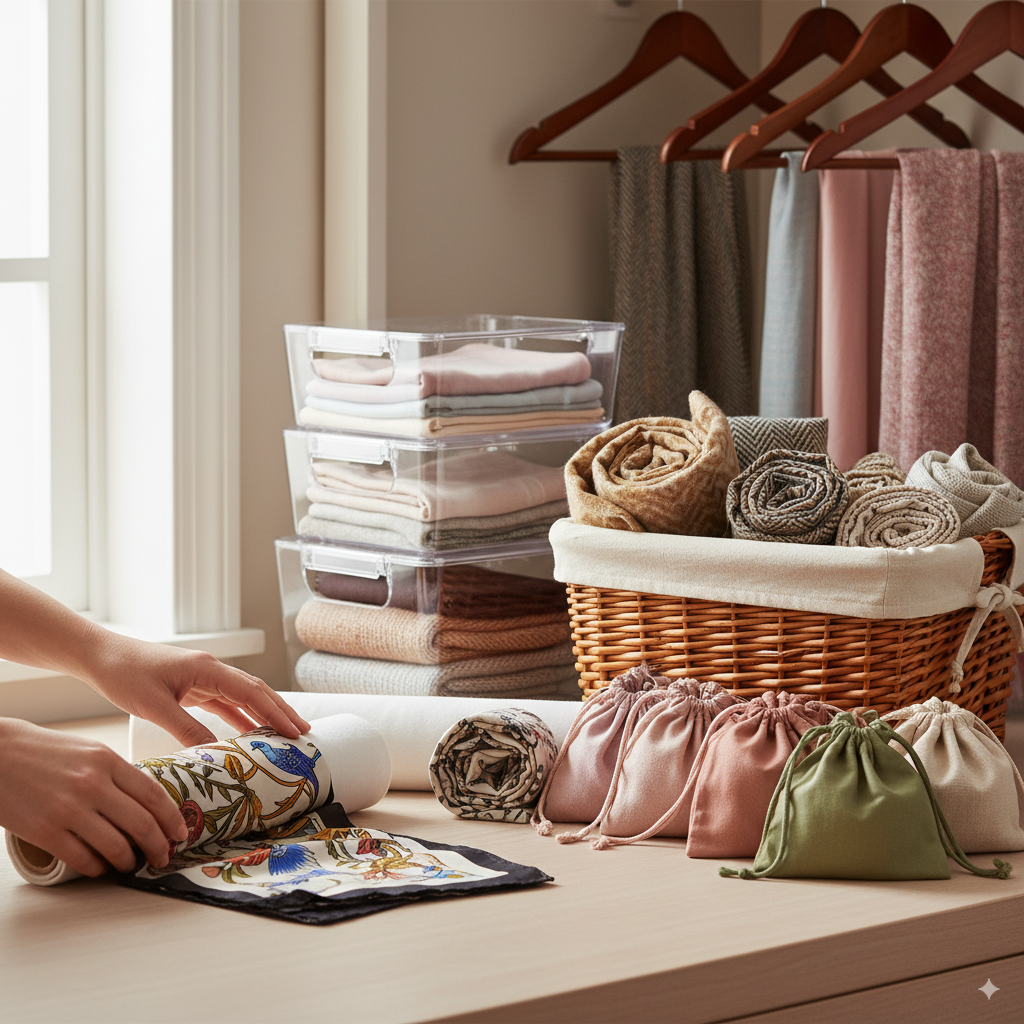A handwoven shawl holds more than pattern and texture; it carries the quiet dignity of time-honored tradition. Each one begins not with fabric, but with intention. The artisan’s first thread marks the start of a deeper journey, one rooted in patience, purpose, and heritage.
These shawls are born through rhythm and ritual, shaped not by haste, but by the calm, steady language of the loom. Every fold reflects a culture’s pride, a weaver’s devotion, and a story that spans generations. And when finally worn, it becomes more than an adornment; it becomes a connection to something enduring.
Wearing a handwoven shawl is like stepping into a moment suspended in time. Its softness holds the echo of hours spent at the loom, its design a whisper from generations past. It invites stillness, reflection, and reverence for things made with heart and held with meaning.
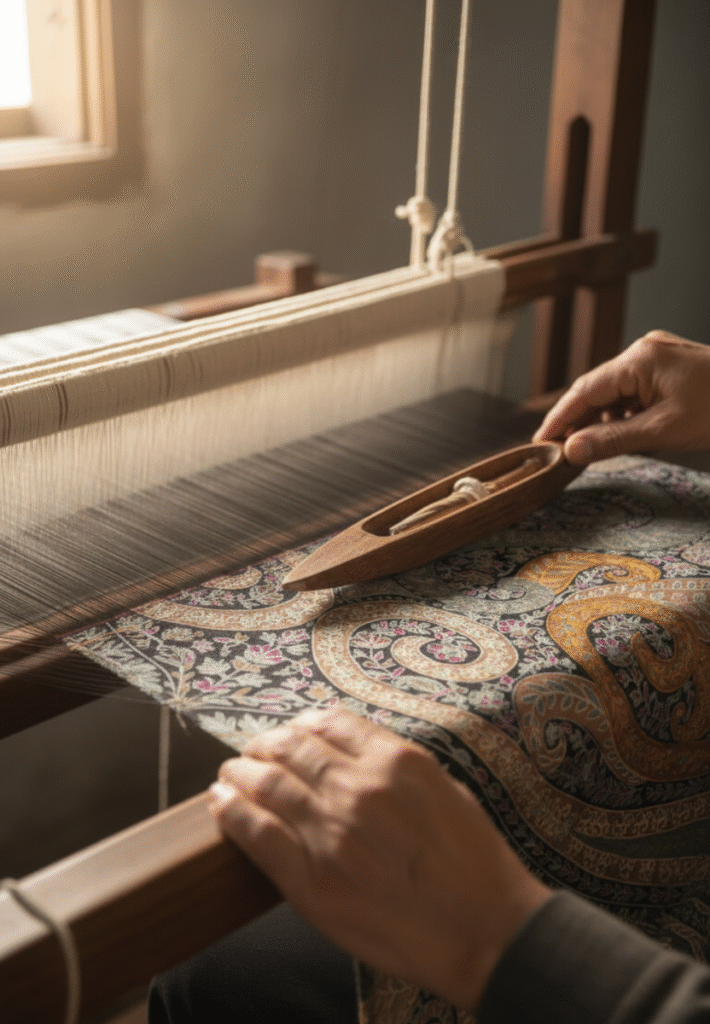
The Intricate Craftsmanship Behind Handwoven Shawls
The Artisan’s Touch: Creating a Masterpiece in Every Thread
Behind every handwoven shawl lies a world of intention. The artisan begins not with haste, but with a quiet sense of ritual, preparing the loom, aligning the warp, and beginning the meditative rhythm of weaving.
There is no automation, no shortcuts. Each day brings incremental progress: a few inches of fabric, patterns emerging thread by thread. Some shawls take weeks to complete, especially when intricate borders or fine embroidery is involved. The artisan must control tension, preserve symmetry, and keep the motif centered—all without a digital guide.
Their hands memorize movements passed down through generations, but their mind remains completely present. It’s this fusion of memory and mindfulness that gives every shawl its soul, visible in the texture, the finish, and the character of the weave itself.
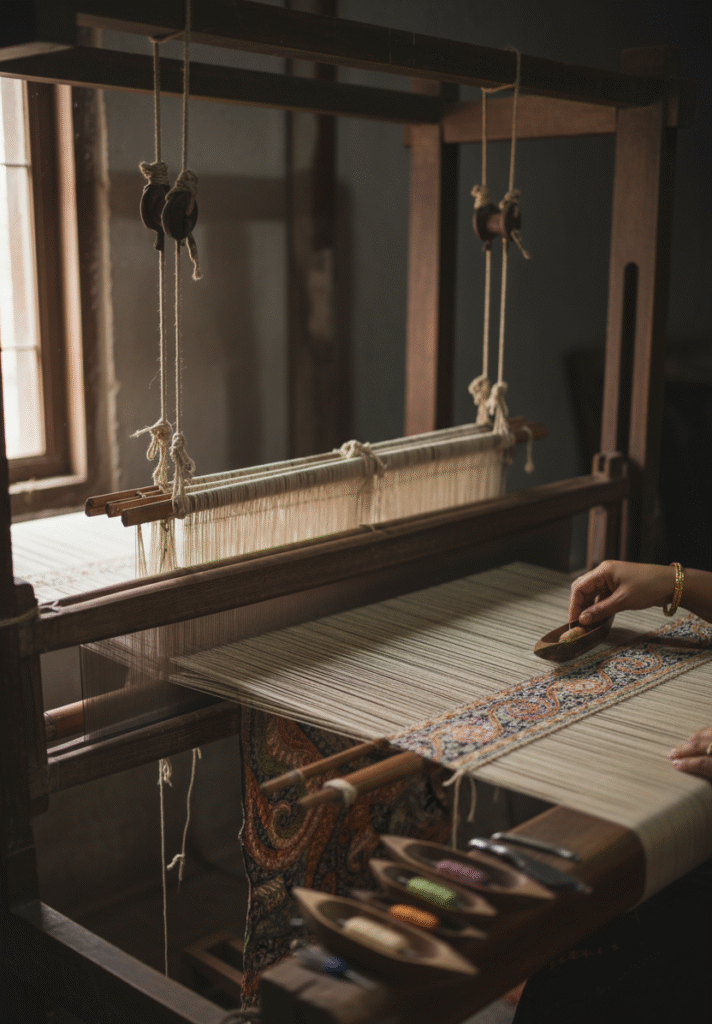
Traditional Weaving Techniques: Preserving a Legacy of Craft
Handwoven shawls embody cultural heritage, carrying techniques refined over centuries. These techniques are not just about creating beautiful patterns; they are about preserving a way of life. Using traditional handlooms, each shawl becomes a unique work of art that tells the story of the artisans and their ancestors.
Its beauty lies in subtle variations, small irregularities that reveal the hand behind the weave. Unlike machine-made shawls, each handwoven piece has its own character, adding to the charm and individuality of the final product.
The Cultural Significance of Handwoven Shawls: More Than Just a Garment
Cultural Heritage Woven Into Every Shawl
Every handwoven shawl carries with it centuries of culture, heritage, and symbolism. The intricate designs and motifs used in Kashmir’s shawls are not just aesthetic, they hold deeper meanings tied to nature, spirituality, and tradition. For example, floral patterns may symbolize growth and life, while geometric designs can represent balance and harmony.
When you wear a handwoven shawl, you are not just adorning yourself with luxury, you are carrying with you a piece of cultural history, beautifully woven into the fabric. These shawls preserve the timeless artistry of Kashmir, keeping the stories of the region alive with every thread.
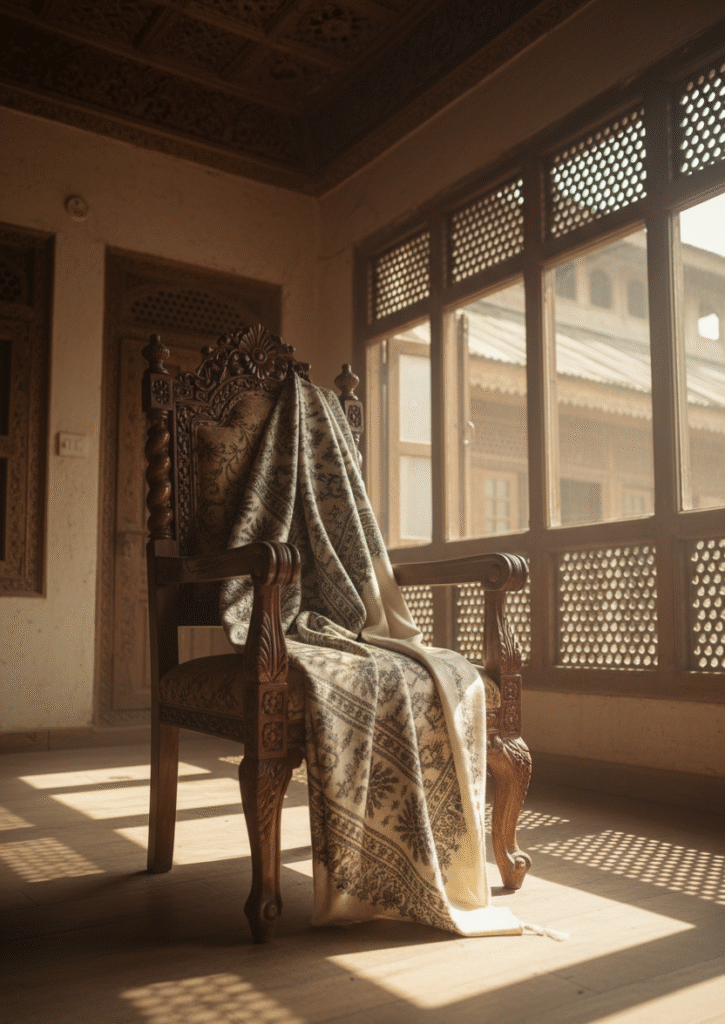
The Uniqueness of Handwoven Shawls: A One-of-a-Kind Masterpiece
One of the most captivating features of a handwoven shawl is its uniqueness. While mass-produced textiles follow a pattern, no two handwoven shawls are ever identical. This individuality is a direct result of the artisan’s touch, the variations in the weaving process, the selection of fibers, and the careful craftsmanship contribute to the one-of-a-kind nature of each piece.
Each handwoven shawl tells its own story, a reflection of the artisan’s skill and the cultural traditions they carry. At Kashmir Bloom, we embrace this uniqueness, ensuring that every shawl we offer is a personal treasure for our customers.
The Patience Behind Handwoven Shawls: A Craft That Defines Luxury
Made to Endure: Fashion That Becomes Legacy
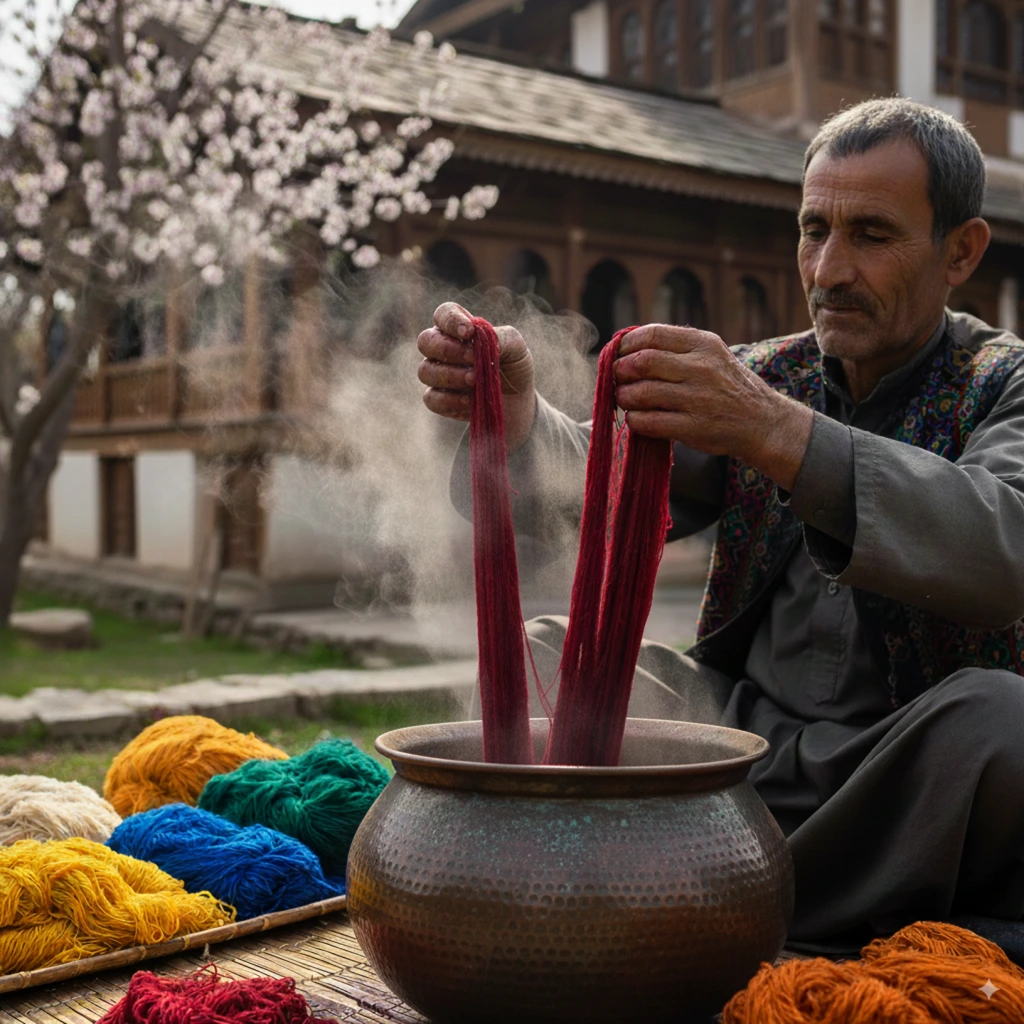
Unlike fast fashion made in hours, a handwoven shawl is created slowly with patience and care, a quiet luxury born of time. The process of creating these shawls is slow and deliberate, every thread woven with care, every pattern crafted with purpose. This is where their true luxury lies: the time invested in crafting a shawl ensures that it becomes a timeless piece, not just a fleeting fashion trend.
A Contrast to Mass Production: Choosing Quality Over Speed
While the fashion industry often focuses on quick turnarounds and cheap production, a handwoven shawl is the antithesis of this fast fashion model. Every shawl at Kashmir Bloom is crafted slowly, with care, attention to detail, and respect for the materials used.
Unlike machine-made shawls that can be churned out in hours, handwoven shawls are created over days, sometimes weeks, by skilled artisans who pour their craft into every piece.This slow fashion ethos is what makes handwoven shawls not only luxurious but sustainable. They are made to endure, providing lasting value to those who choose them.
The Emotional Value of Handwoven Shawls: A Treasure Passed Through Generations
Heirloom Quality: A Shawl That Becomes Part of Your Legacy
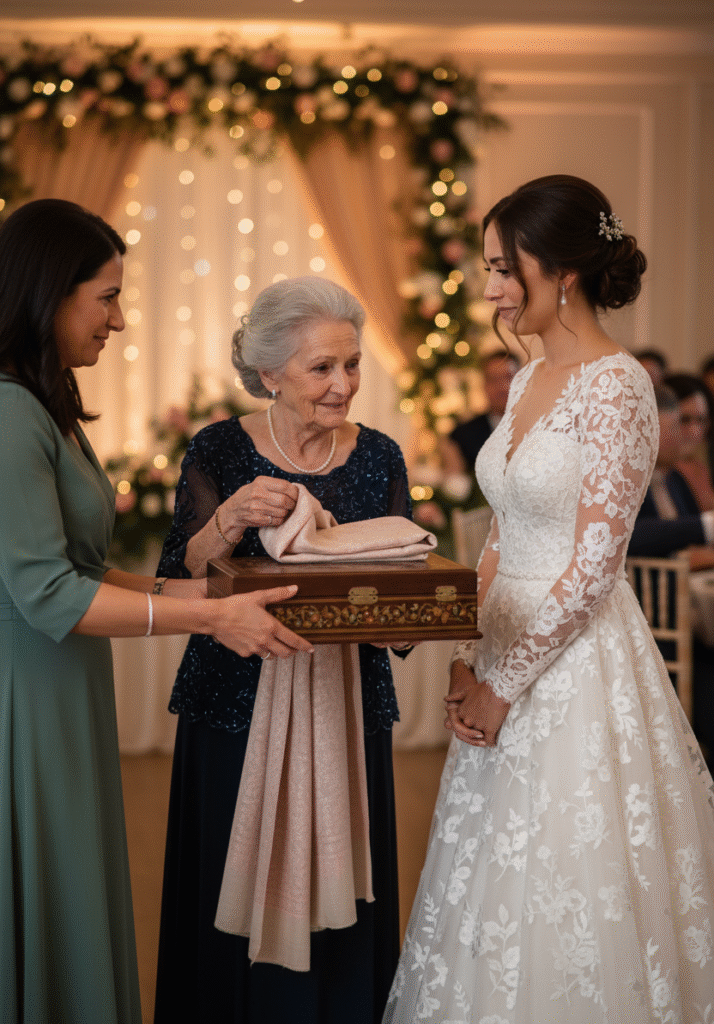
A handwoven shawl is more than just a fashionable accessory; it’s an heirloom. Crafted to last for generations, it carries with it memories, emotions, and connections to the past. Whether worn at a wedding, a family gathering, or kept as a family treasure, a handwoven shawl becomes more than just a piece of fabric. It becomes part of your family’s story.
At Kashmir Bloom, we understand the sentimental value that comes with owning a handwoven shawl. These pieces are meant to be cherished, passed down, and remembered for years to come.
The Sentimental Connection: A Gift with Meaning
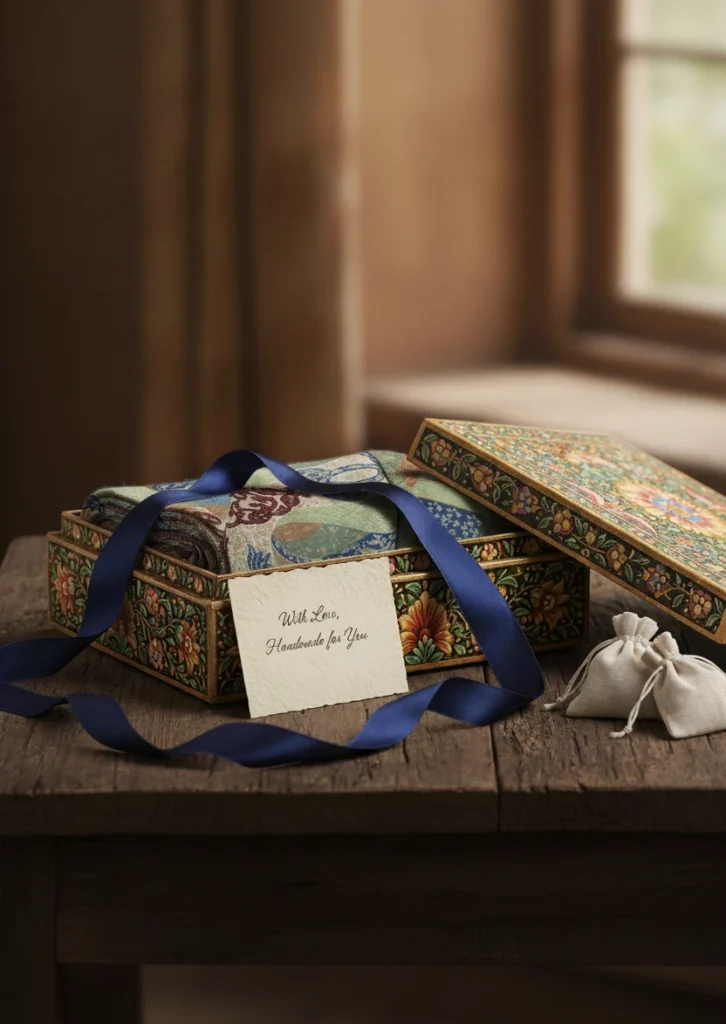
The act of gifting a handwoven shawl carries deep sentimental value. Unlike mass-produced items, which may lack a personal touch, a handwoven shawl is an expression of thoughtfulness, care, and appreciation. Whether given for a wedding, a special birthday, or another milestone, it becomes a symbol of the relationship between the giver and the receiver.
Each shawl carries the craftsmanship and love of the artisan, as well as the memories of the person who gives or receives it.
The Sustainability of Handwoven Shawls: Crafting a Better Future
Eco-Friendly Crafting: Tradition Meets Responsibility
The process of creating handwoven shawls is inherently sustainable. Unlike machine-made textiles, which rely on mass production methods that contribute to waste and pollution, handwoven shawls are carefully crafted with attention to detail.
The materials used, Pure Pashmina, Cashmere, and Silk, are ethically sourced, ensuring that your shawl is as good for the planet as it is for you.
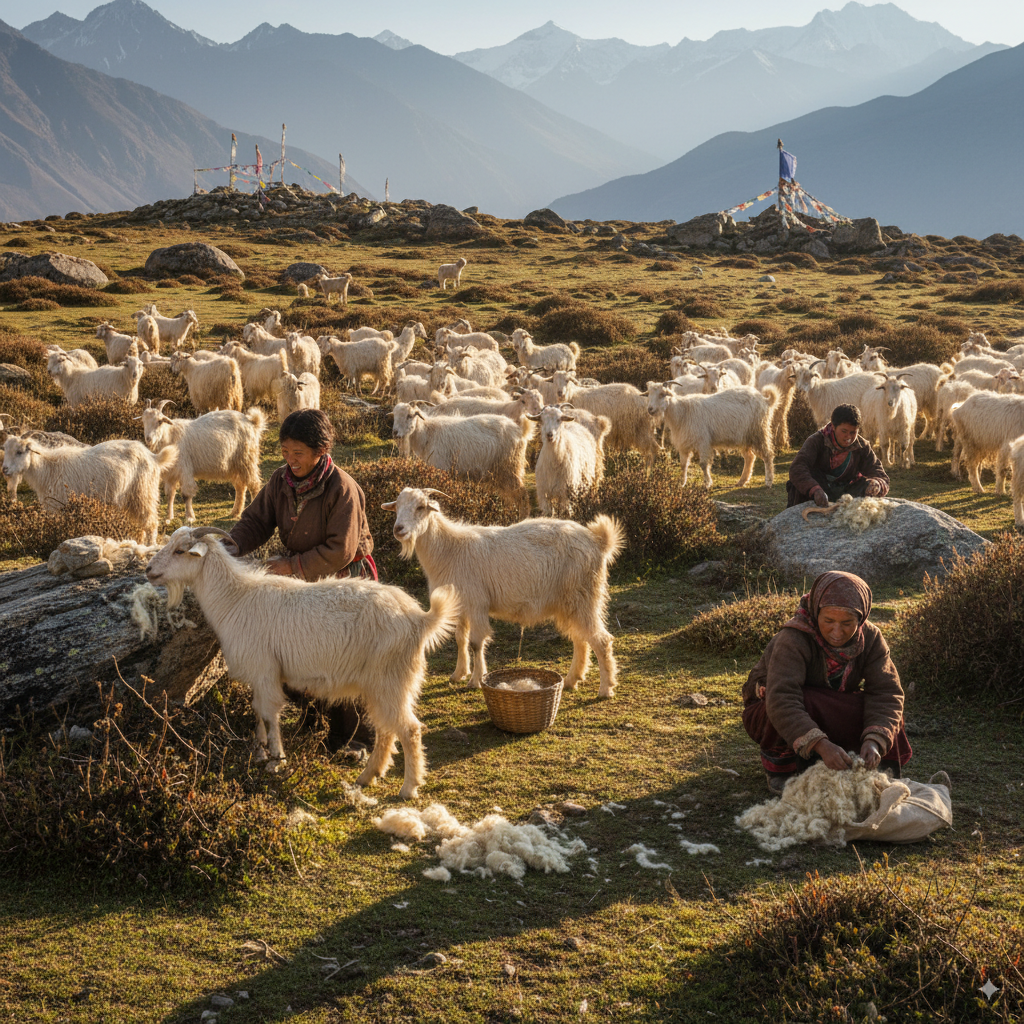
Investing in Longevity: A Sustainable Choice
Each handwoven shawl is created not just to be worn, but to be remembered. Crafted with care and intention, it holds its strength quietly, gracefully enduring through years of wear and time. The artistry lies not only in how it’s made, but in how long it stays with you.
Passed from one season to the next, and from one hand to another, its story deepens. This gentle longevity is its own form of sustainability, where beauty is not rushed, and nothing is wasted. What begins as a piece to wear becomes something to keep, protect, and one day, share.
Caring for Your Handwoven Shawl: Preserving a Legacy
Preservation Through Simple Care
Handwashing: Gently handwash your shawl in cold water using a mild detergent designed for delicate fibers like Pashmina and silk.
Drying: Avoid wringing your shawl. Lay it flat to dry on a clean, dry surface, away from direct sunlight.
Storage: Store your shawl in a cool, dry place, preferably in a breathable fabric bag to protect it from dust, moisture, and sunlight. Avoid storing it in plastic, which can trap moisture and damage the fibers.
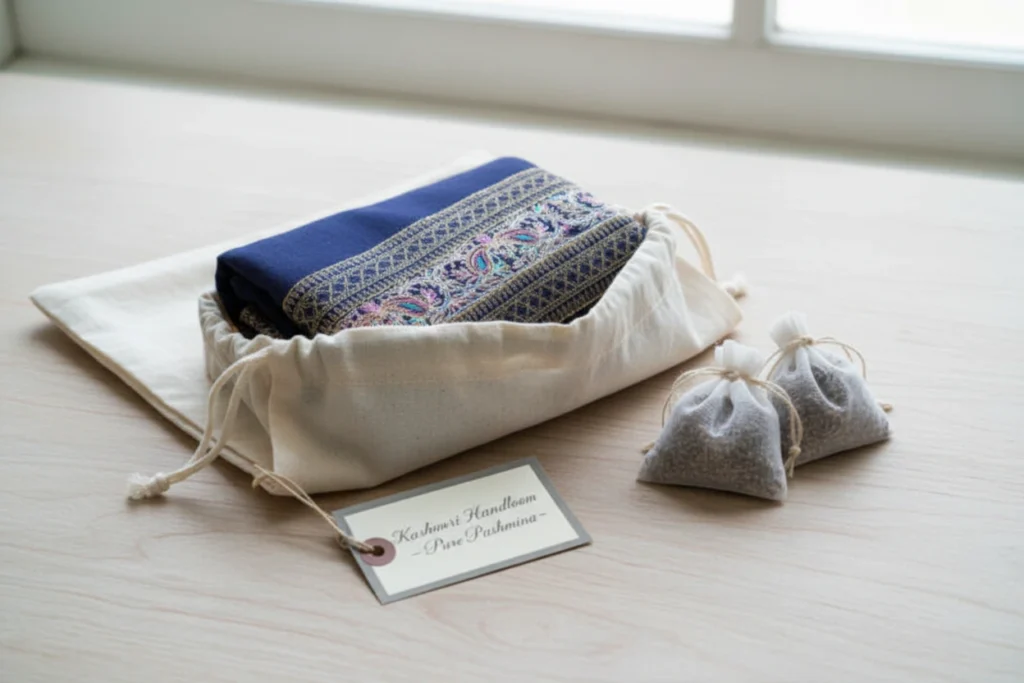
Why Proper Care Matters: A Commitment to Conscious Living
A handwoven shawl is a timeless investment, and caring for it properly ensures that it will be a treasured heirloom for future generations. Whether you pass it down as a family heirloom or continue to enjoy it yourself, the longevity of the shawl is directly tied to how well it is maintained.
By following simple care instructions, you can ensure that your handwoven shawl retains its beauty and integrity for years to come, allowing it to carry your family’s legacy forward.
Embrace the Elegance of Handwoven Shawls
There is a quiet elegance in handwoven shawls, inviting the wearer to explore style in a thoughtful, expressive way while carrying both history and personality. Each piece offers more than texture and color; it inspires creativity, allowing contemporary outfits to gain depth and character through subtle patterns and refined drape. By merging tradition with personal expression, these shawls become versatile companions in modern life.
Beyond their visual appeal, they create connections that reach far beyond fashion. Worn, gifted, or displayed, they spark admiration, conversation, and curiosity about the artisans’ craft and the cultures they represent. In this sense, a shawl is more than an accessory; it is a bridge between creativity and heritage, art and everyday experience, tradition and modernity.
FAQ’s
How do I fold a handwoven shawl to avoid creases?
Lay the shawl flat, fold in thirds lengthwise, then fold in half or roll gently from one end to avoid sharp creases. Avoid placing heavy objects on top of it in storage to preserve its natural drape and texture.
Are natural imperfections a flaw in handwoven shawls?
Not at all. Tiny irregularities, such as variations in thread thickness or asymmetry in the weave, are signs that the piece was woven by hand. These are considered part of the shawl’s character and uniqueness, not defects.
Is it appropriate to wear a handwoven shawl as a head covering?
Absolutely. Many people choose to wear shawls as head coverings for cultural, religious, or personal reasons. The soft, breathable fabrics used in handwoven shawls make them both practical and elegant for this purpose.
How do I store a shawl during off-season months?
Wrap the shawl in muslin or unbleached cotton, place it flat or loosely folded, and store it in a cool, dry drawer or shelf. Add lavender sachets or cedar blocks to prevent moths; avoid naphthalene balls, which can damage delicate fibers.
Each Kashmir Bloom creation is heritage preserved and elegance renewed. If you are ready to find your timeless piece, connect with us at +44-121-798-0032, hello@kashmirbloom.com, or in person at 1532 Pershore Rd, Stirchley, Birmingham.


